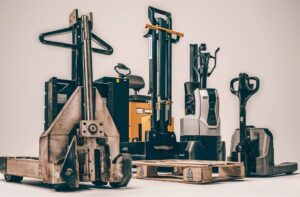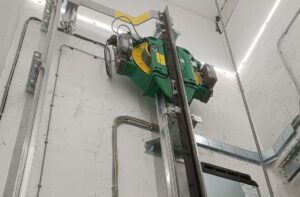Mirror Etching
Whether it is a mirror or etching over a mirror finish, both are commonly used for elevator cabins. Therefore, it is important to understand what a mirror finish is in order to choose the right option for our elevator cabin. As end users, we always seek a good design for the elevator car, which matters to us, and we often consider it the defining feature of the entire elevator.
Stainless Steel Mirror Sheets
Stainless steel mirror sheets represent a specialized form of stainless-steel sheets that have been meticulously processed to obtain a highly reflective and mirror-like surface. Crafted from durable stainless-steel alloys renowned for their resistance to corrosion, strength, and longevity, these sheets undergo a meticulous finishing regimen involving polishing and buffing to achieve their distinctive reflective quality.
Key Features of Stainless-Steel Mirror Sheets:

- Material Composition: Typically fabricated from austenitic stainless-steel grades like 304 or 316, these sheets contain chromium and nickel for enhanced corrosion resistance and the ability to achieve a brilliant polish.
- Mirror Finish: The mirror finish is achieved through a meticulous multi-step process. Initially, mechanical grinding is employed to eliminate surface imperfections. Subsequent stages involve the use of finer abrasives, polishing compounds, and buffing wheels to achieve a flawless reflective surface.
- Applications: Stainless steel mirror sheets find versatile application across various industries and settings. They are commonly utilized in architectural design, interior decoration, automotive detailing, kitchen appliances, reflective signage, and other decorative features where a polished and reflective surface is desired.
- Aesthetics and Versatility: The mirror finish imparts a sleek and contemporary aesthetic, allowing these sheets to seamlessly integrate into diverse design styles ranging from modern to traditional.
- Corrosion Resistance: Due to their inherent corrosion-resistant properties, stainless steel mirror sheets are ideal for environments where exposure to moisture, chemicals, or outdoor elements could potentially degrade lesser-grade materials.
- Hygienic Properties: The smooth, non-porous surface of stainless steel mirror sheets facilitates easy cleaning and maintenance, making them particularly suitable for applications where hygiene and cleanliness are paramount, such as in the food industry or healthcare settings.
- Customization: Stainless steel mirror sheets offer ample opportunities for customization to achieve specific design effects. Additional treatments like PVD coating, brushing, etching, and stamping can be applied to create unique textures, colors, or patterns.

Applications of Stainless-Steel Mirror Sheets in Various Industries:
Stainless steel mirror sheets find widespread utility across architectural and decorative applications, offering versatility and the potential for creative expression. They can be seamlessly combined with other surface finishes such as PVD coating, brushing, sandblasting, etching, and stamping, thereby enhancing the aesthetic appeal and functionality of living spaces.
Achieving a Mirror Finish on Stainless Steel
Mirror polishing is a complex process used to create a highly reflective surface on stainless steel. It’s more involved than a brushed finish and requires multiple mechanical polishing steps. The overall process can be broken down into two main stages: grinding and buffing.
Grinding:
- Rough Grinding: This initial step uses a coarse abrasive (like a 600 grit sanding belt) to remove impurities and imperfections from the surface. The grinding is done in straight lines.
- Semi-Fine Grinding: A finer abrasive (like an 800 grit sanding belt) is used to further smooth the surface and remove any marks left by the rough grinding. The goal is to achieve a bright, uniform finish with minimal scratches.
- Fine Grinding: The final grinding stage employs an even finer abrasive (like a 1000-grit sanding belt) to eliminate minor imperfections and achieve a near-mirror-like shine.
Buffing:
- Waxing: A wool wheel with green wax is used to polish the surface to a high gloss. This step refines the finish without further grinding.
- Brightening: The final step involves buffing the mirror-polished surface with a clean cotton wheel to remove any remaining residue and achieve a flawless finish.
The Result:
After completing this process, the stainless steel surface should be smooth and defect-free, with a high degree of reflectivity (ideally reaching an 8K mirror finish). There should be no visible scratches, orange peel texture, or unevenness.
Conclusion:
This is a simplified explanation, and professional polishing may involve additional techniques and specialized equipment. The specific abrasives and buffing compounds used may vary depending on the desired finish and the type of stainless steel. So whatever you like, you can choose from your elevator supplier. They should have all the options available.





Pingback: Selecting Stainless Steel for Elevator Car – Elevators Tale
Hi there,
My name is Mike from Monkey Digital,
Allow me to present to you a lifetime revenue opportunity of 35%
That’s right, you can earn 35% of every order made by your affiliate for life.
Simply register with us, generate your affiliate links, and incorporate them on your website, and you are done. It takes only 5 minutes to set up everything, and the payouts are sent each month.
Click here to enroll with us today:
https://www.monkeydigital.org/affiliate-dashboard/
Think about it,
Every website owner requires the use of search engine optimization (SEO) for their website. This endeavor holds significant potential for both parties involved.
Thanks and regards
Mike Flatcher
Monkey Digital